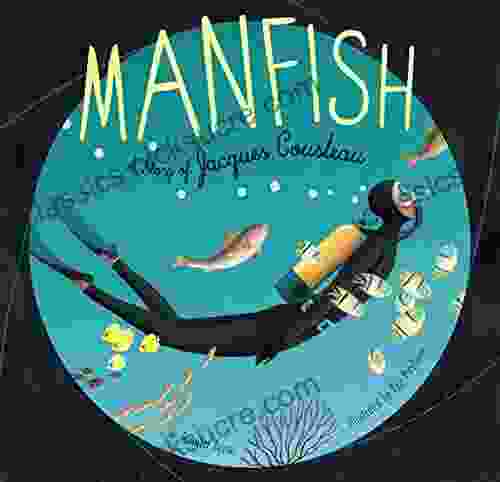Treating Explosive Kids: The Collaborative Problem Solving Approach

Every parent has experienced the frustration of dealing with an explosive child. These kids seem to erupt like volcanoes, with little warning and often over the smallest things. They may lash out physically, verbally, or both. Parents often feel helpless in the face of these outbursts, but there is hope. The Collaborative Problem Solving approach can help parents and children work together to resolve conflicts and improve behavior.
4.5 out of 5
| Language | : | English |
| File size | : | 2444 KB |
| Text-to-Speech | : | Enabled |
| Screen Reader | : | Supported |
| Enhanced typesetting | : | Enabled |
| Word Wise | : | Enabled |
| Print length | : | 257 pages |
What is Collaborative Problem Solving?
Collaborative Problem Solving (CPS) is a therapeutic approach that helps parents and children to work together to resolve conflicts and improve behavior. CPS is based on the idea that children's behavior is a way of communicating their needs. When children feel frustrated or overwhelmed, they may act out in order to get their needs met. CPS helps parents to understand their child's behavior and to work with them to find positive ways to meet their needs.
How does CPS work?
CPS is a four-step process:
- Identify the problem. The first step is to identify the problem behavior. What is the child ng that is causing a problem? Once the problem has been identified, the parent and child can work together to develop a plan to address it.
- Understand the child's perspective. The second step is to understand the child's perspective. Why is the child behaving in this way? What are their needs that are not being met? Once the parent understands the child's perspective, they can begin to work with them to find positive ways to meet those needs.
- Generate solutions. The third step is to generate solutions. The parent and child should work together to come up with a list of possible solutions to the problem. The solutions should be positive and realistic, and they should meet the needs of both the child and the parent.
- Implement the solution. The fourth and final step is to implement the solution. The parent and child should work together to put the solution into action. It is important to be patient and consistent, and to make adjustments as needed.
Benefits of CPS
CPS has been shown to be an effective approach for treating explosive kids. Studies have shown that CPS can reduce problem behaviors, improve parent-child relationships, and increase child well-being. CPS can also help children to develop problem-solving skills, self-control, and empathy.
Getting started with CPS
If you are interested in trying CPS with your child, there are a few things you can do to get started:
- Learn about CPS. There are a number of resources available online and in libraries that can help you to learn about CPS. You can also talk to your child's doctor or therapist about CPS.
- Find a CPS therapist. If you are interested in working with a CPS therapist, you can find a list of therapists in your area on the website of the National Association of Cognitive-Behavioral Therapists (NACBT).
- Start practicing CPS. You can start practicing CPS on your own at home. There are a number of online resources that can help you to get started, such as the website of the Center for Collaborative Problem Solving.
CPS is a promising approach for treating explosive kids. If you are struggling to deal with your child's behavior, CPS may be able to help. By working together, you and your child can resolve conflicts, improve behavior, and build a stronger relationship.
4.5 out of 5
| Language | : | English |
| File size | : | 2444 KB |
| Text-to-Speech | : | Enabled |
| Screen Reader | : | Supported |
| Enhanced typesetting | : | Enabled |
| Word Wise | : | Enabled |
| Print length | : | 257 pages |
Do you want to contribute by writing guest posts on this blog?
Please contact us and send us a resume of previous articles that you have written.
 Fiction
Fiction Non Fiction
Non Fiction Romance
Romance Mystery
Mystery Thriller
Thriller SciFi
SciFi Fantasy
Fantasy Horror
Horror Biography
Biography Selfhelp
Selfhelp Business
Business History
History Classics
Classics Poetry
Poetry Childrens
Childrens Young Adult
Young Adult Educational
Educational Cooking
Cooking Travel
Travel Lifestyle
Lifestyle Spirituality
Spirituality Health
Health Fitness
Fitness Technology
Technology Science
Science Arts
Arts Crafts
Crafts DIY
DIY Gardening
Gardening Petcare
Petcare M J Ryan
M J Ryan Dana Meachen Rau
Dana Meachen Rau Leo Furcht
Leo Furcht Ed Van Put
Ed Van Put Julie Schoen
Julie Schoen Shyam Bharath S D
Shyam Bharath S D Richard Preston
Richard Preston William A Richards
William A Richards David Lindley
David Lindley Tom Hull
Tom Hull Tim Sullivan
Tim Sullivan Julie Foudy
Julie Foudy Christine Gross Loh
Christine Gross Loh Bert Randolph Sugar
Bert Randolph Sugar Ted Starkey
Ted Starkey Dan John
Dan John Elia Kacapyr
Elia Kacapyr Desmond Morris
Desmond Morris Joe Samuel Starnes
Joe Samuel Starnes Carl Hiaasen
Carl Hiaasen Ralph Henry Barbour
Ralph Henry Barbour Melinda Sharma
Melinda Sharma Sean Moloney
Sean Moloney Carter G Walker
Carter G Walker Iain Campbell
Iain Campbell Kim Hutchinson
Kim Hutchinson Allistair Mccaw
Allistair Mccaw Anne Griffin Perry
Anne Griffin Perry Ronald W Kipp
Ronald W Kipp Marilynn Hughes
Marilynn Hughes Lucie Hemmen
Lucie Hemmen Greg Jacobs
Greg Jacobs Michelle Obama
Michelle Obama Leslie Scrivener
Leslie Scrivener Annemarie Brear
Annemarie Brear Lynn Marriott
Lynn Marriott Michael Higgins
Michael Higgins David Long
David Long Aarron Davis
Aarron Davis Tomohito Oda
Tomohito Oda Vincent J Monastra
Vincent J Monastra Jack Thurston
Jack Thurston John Mole
John Mole Donald Asher
Donald Asher Dave Heller
Dave Heller Jamie Davis
Jamie Davis Bruce Bryans
Bruce Bryans Ernest Nagel
Ernest Nagel Nicholas Johnson
Nicholas Johnson Ken Shamrock
Ken Shamrock Annette Dixon
Annette Dixon Christo Obreschkow
Christo Obreschkow Michelle Mullen
Michelle Mullen Anthea Sharp
Anthea Sharp Thomas Celentano
Thomas Celentano Peter Turchin
Peter Turchin Peter Walker
Peter Walker Kevin Fall
Kevin Fall I Randolph Daniel
I Randolph Daniel Daniele Bolelli
Daniele Bolelli Beth Jacobs Phd
Beth Jacobs Phd Rick August
Rick August Lena Empyema
Lena Empyema Kelly St Clare
Kelly St Clare Anthony Edwards
Anthony Edwards Brian J Sorrells
Brian J Sorrells Gail Fay
Gail Fay Glenn Adamson
Glenn Adamson Stephen Kendrick
Stephen Kendrick Karen Simmers Nartker
Karen Simmers Nartker Britta Wallace
Britta Wallace Herbert Dorsey
Herbert Dorsey Jon Cohen
Jon Cohen Chella Quint
Chella Quint Peter Grey
Peter Grey David Hume
David Hume Marsha M Linehan
Marsha M Linehan Jennifer Raff
Jennifer Raff Elizabeth Pantley
Elizabeth Pantley David Foster Wallace
David Foster Wallace Steve Schwartz
Steve Schwartz Abdi Nazemian
Abdi Nazemian Stephen White
Stephen White Patty Bear
Patty Bear Rina Mae Acosta
Rina Mae Acosta Keith Devlin
Keith Devlin Julian Savulescu
Julian Savulescu Shanna Swendson
Shanna Swendson Tanya Lloyd Kyi
Tanya Lloyd Kyi Anne Lamott
Anne Lamott Brandon Sieh
Brandon Sieh Tella Olayeri
Tella Olayeri Jennifer Berne
Jennifer Berne Rory D Nelson
Rory D Nelson Sir Francis Chichester
Sir Francis Chichester Jean Watson
Jean Watson Annie Duke
Annie Duke Johnson Smith
Johnson Smith Marcus Engel
Marcus Engel Annette Evans
Annette Evans Michael Howard
Michael Howard Daniel Barbarisi
Daniel Barbarisi David M Carballo
David M Carballo Ashild Kolas
Ashild Kolas Chuck Tingle
Chuck Tingle Laura Hillenbrand
Laura Hillenbrand Graham Poll
Graham Poll Anneli Williams
Anneli Williams Douglas R Dechow
Douglas R Dechow Del Hungerford
Del Hungerford Yani Alfonso
Yani Alfonso Annie Vernon
Annie Vernon Florence Littauer
Florence Littauer Sara Bennett
Sara Bennett John R Anderson
John R Anderson Warren Hilton
Warren Hilton La Leche League International
La Leche League International Cindy Pawlcyn
Cindy Pawlcyn John Michael Greer
John Michael Greer Joe Borelli
Joe Borelli Madeleine Boskovitz Ph D
Madeleine Boskovitz Ph D Lorraine Evans
Lorraine Evans Christopher Paolini
Christopher Paolini Francis Su
Francis Su Don Cherry
Don Cherry Bill Plotkin
Bill Plotkin Belden C Lane
Belden C Lane Saul Greenberg
Saul Greenberg Md Nazaneen Homaifar
Md Nazaneen Homaifar Gabrielle Walker
Gabrielle Walker Dustin Brady
Dustin Brady Tom Clynes
Tom Clynes Margaret L Lial
Margaret L Lial Christopher D Winnan
Christopher D Winnan Colm Cooper
Colm Cooper Chad Noreuil
Chad Noreuil C Mo
C Mo New England Wild Flower Society
New England Wild Flower Society Francheska Fifield
Francheska Fifield Deborah Ellis
Deborah Ellis Jacqueline Boyle
Jacqueline Boyle Richard Freeman
Richard Freeman Herb Payson
Herb Payson Lavinia Spalding
Lavinia Spalding Frost Kay
Frost Kay Michael A Stackpole
Michael A Stackpole Billy Hansen
Billy Hansen Bianca Scardoni
Bianca Scardoni Norm Zeigler
Norm Zeigler K Loraine
K Loraine Gareth Ainsworth
Gareth Ainsworth Frank Burtnett
Frank Burtnett Meg Meeker
Meg Meeker Jules Archer
Jules Archer Companion Works
Companion Works Kris Hampton
Kris Hampton Kass Morgan
Kass Morgan Zenas Leonard
Zenas Leonard Ben Stoeger
Ben Stoeger Peter Lipton
Peter Lipton Traci B Fox
Traci B Fox Jamie D Roberts Lmft
Jamie D Roberts Lmft Anne Laure Jackson
Anne Laure Jackson Barbara Savage
Barbara Savage Kathleen M Galvin
Kathleen M Galvin Stephen Rodrick
Stephen Rodrick Reia
Reia Johnny Weir
Johnny Weir Shelley Emling
Shelley Emling Joshua Piven
Joshua Piven Jackson Carter
Jackson Carter Ed Housewright
Ed Housewright Julie Kagawa
Julie Kagawa Jaron Lanier
Jaron Lanier Monica Seles
Monica Seles John Powers
John Powers Geoff Greig
Geoff Greig Joel Gunderson
Joel Gunderson C Rich
C Rich Julie Hall
Julie Hall Dr Hooelz
Dr Hooelz Doug Knutson
Doug Knutson Tim Grollimund
Tim Grollimund Jerry A Pattengale
Jerry A Pattengale Kristen Welch
Kristen Welch George M Marsden
George M Marsden Mjg Education
Mjg Education Sasha Sagan
Sasha Sagan Annie Murphy Paul
Annie Murphy Paul John J Donohue
John J Donohue Aw Schultz
Aw Schultz Jak Beardsworth
Jak Beardsworth Emily L Casanova
Emily L Casanova Edward Espe Brown
Edward Espe Brown Bob Seshadri
Bob Seshadri Shirley Davis Brown
Shirley Davis Brown Claire Fraise
Claire Fraise Peter C Earle
Peter C Earle Ryan T White
Ryan T White Lamar Underwood
Lamar Underwood Kevin Keitoshi Casey
Kevin Keitoshi Casey Phil Richards
Phil Richards Olly Postanin
Olly Postanin Lynn Painter
Lynn Painter Jolene Stockman
Jolene Stockman Joshua Lawrence Kinser
Joshua Lawrence Kinser Giovanni Bennardo
Giovanni Bennardo Harlan Cohen
Harlan Cohen Mishka Shubaly
Mishka Shubaly Michael Bernick
Michael Bernick Michael Lieberman
Michael Lieberman Susan Dexter
Susan Dexter Scott Ellsworth
Scott Ellsworth William S Vincent
William S Vincent Rick Brinkman
Rick Brinkman Thor Heyerdahl
Thor Heyerdahl Richmond Campbell
Richmond Campbell Barney Scout Mann
Barney Scout Mann Jeffrey E F Friedl
Jeffrey E F Friedl Dr Deirdre Clark
Dr Deirdre Clark Audiolearn Content Team
Audiolearn Content Team Laurence Parent
Laurence Parent T K Richardson
T K Richardson Ken Siri
Ken Siri Benjamin Wiker
Benjamin Wiker Thema Bryant Davis
Thema Bryant Davis R Michael Shaft
R Michael Shaft Dr Harrison Sachs
Dr Harrison Sachs Mamma Margaret
Mamma Margaret Annie Thoms
Annie Thoms Daniel L Bray
Daniel L Bray Francis French
Francis French Jack Petrash
Jack Petrash Jim Meuninck
Jim Meuninck Steve Mchugh
Steve Mchugh David Hoffbrand
David Hoffbrand Raye Wagner
Raye Wagner Robert Nye
Robert Nye Filipe Masetti Leite
Filipe Masetti Leite Kathryn Aalto
Kathryn Aalto Jake Byrne
Jake Byrne Steve Currier
Steve Currier Paul H Wender
Paul H Wender Kelly Oram
Kelly Oram Steve Mcmichael
Steve Mcmichael Dave Bosanko
Dave Bosanko Dr Julie Shannon
Dr Julie Shannon Henry Stedman
Henry Stedman William Johnston
William Johnston Vic Widman
Vic Widman Wiley Mccrary
Wiley Mccrary Kristina Kuzmic
Kristina Kuzmic Melinda Cooper
Melinda Cooper Joshua M Powell
Joshua M Powell Kerry Andy Ph D
Kerry Andy Ph D Kay L Moody
Kay L Moody Jacob Erez
Jacob Erez Maxine Van Evera Lupo
Maxine Van Evera Lupo Stanley H Block
Stanley H Block Babette A Brumback
Babette A Brumback Ric K Hill
Ric K Hill Margaret Bemister
Margaret Bemister C G Yeager
C G Yeager Magoosh
Magoosh Lucy Sutcliffe
Lucy Sutcliffe Julian Thomas
Julian Thomas Anne Garrels
Anne Garrels Jack Challoner
Jack Challoner Lady Gaga
Lady Gaga Sarah Kowalski
Sarah Kowalski P G Wodehouse
P G Wodehouse Sarah Luddington
Sarah Luddington Shannon Lee
Shannon Lee Darren Levine
Darren Levine Sabrina Sargent
Sabrina Sargent Ascencia Pharmacy Technician Exam Prep Team
Ascencia Pharmacy Technician Exam Prep Team Shing Yin Khor
Shing Yin Khor Douglas Boze
Douglas Boze Shaun Gallagher
Shaun Gallagher Bob Mullen
Bob Mullen Paul Wilbur
Paul Wilbur Josh Alwine
Josh Alwine David C M Dickson
David C M Dickson Victoria Biggs
Victoria Biggs Russ King
Russ King Anne Winkler Morey
Anne Winkler Morey Wilfred Cude
Wilfred Cude Jacalyn Duffin
Jacalyn Duffin John U Bacon
John U Bacon Michael Werner
Michael Werner Spencer Langley
Spencer Langley Anne Arthur
Anne Arthur Caroline D Greene
Caroline D Greene Richard Watts
Richard Watts Svetlana Boym
Svetlana Boym Pedro J Izquierdo
Pedro J Izquierdo Eduardo Kohn
Eduardo Kohn Proper Education Group
Proper Education Group Jamie Thom
Jamie Thom Hiro Fujiwara
Hiro Fujiwara Gareth James
Gareth James Jessica Megan Larson
Jessica Megan Larson Timothy Egan
Timothy Egan Michael Wombacher
Michael Wombacher Marie W Lawrence
Marie W Lawrence Barry Meadow
Barry Meadow Claire Legrand
Claire Legrand Patrick Leigh Fermor
Patrick Leigh Fermor Consumer Dummies
Consumer Dummies Critical Role
Critical Role Sali Hughes
Sali Hughes Marv Wolfman
Marv Wolfman Rachel Macy Stafford
Rachel Macy Stafford Mike Ashley
Mike Ashley Robert Kaplinsky
Robert Kaplinsky R I Chalmers
R I Chalmers Fazale Rana
Fazale Rana Maria Del Mar Sacasa
Maria Del Mar Sacasa Sue Dumais
Sue Dumais Merlisa Lawrence Corbett
Merlisa Lawrence Corbett Paul J Zak
Paul J Zak David W Shaw
David W Shaw T Edward Nickens
T Edward Nickens Justin J Lehmiller
Justin J Lehmiller Kate Jones
Kate Jones Sheril Kirshenbaum
Sheril Kirshenbaum Dean Karlan
Dean Karlan Harvey Karp
Harvey Karp Teri Halstead Rn Msn
Teri Halstead Rn Msn Nancy Forbes
Nancy Forbes Eddie Rafii
Eddie Rafii Julian Winters
Julian Winters John N Carbone
John N Carbone Luke Amadeus Ranieri
Luke Amadeus Ranieri Steven Harrison
Steven Harrison Anne Crossman
Anne Crossman Lee Carroll
Lee Carroll Lorne Rubenstein
Lorne Rubenstein Lisa Delmedico Harris
Lisa Delmedico Harris Fred Shoemaker
Fred Shoemaker Charles L Byrne
Charles L Byrne Bill Shipley
Bill Shipley Kj Dell Antonia
Kj Dell Antonia Anne Mctiernan
Anne Mctiernan David Sheff
David Sheff Danya Ruttenberg
Danya Ruttenberg Jackie Bolen
Jackie Bolen Vijay Prashad
Vijay Prashad Jean Liedloff
Jean Liedloff Annette Lareau
Annette Lareau Rabbi Jason Sobel
Rabbi Jason Sobel Stan Byrdy
Stan Byrdy Anthony E Wolf
Anthony E Wolf Trina Boice
Trina Boice Jacob Biggle
Jacob Biggle Paul Nardozzi
Paul Nardozzi Ross W Greene
Ross W Greene Marcia Nathai Balkissoon
Marcia Nathai Balkissoon Micheal J Murphy
Micheal J Murphy Joseph Mctaggart
Joseph Mctaggart Carl Nattrass
Carl Nattrass Glen Simmons
Glen Simmons W Ben Hunt
W Ben Hunt Eric J Mash
Eric J Mash Annie Boochever
Annie Boochever Neva Sullaway
Neva Sullaway Susan Ee
Susan Ee Jody Studdard
Jody Studdard Lexie Williamson
Lexie Williamson Michael Volkmar
Michael Volkmar Gary Genard
Gary Genard Kindle Edition
Kindle Edition David H Stern
David H Stern Olivia Seltzer
Olivia Seltzer Ruth Ravid
Ruth Ravid Phillip E Johnson
Phillip E Johnson Helena Hjalmarsson
Helena Hjalmarsson Jo Wimpenny
Jo Wimpenny Jan D Carline
Jan D Carline Erika Larkin
Erika Larkin Matt Bronsil
Matt Bronsil Randy Ribay
Randy Ribay Marlo Thomas
Marlo Thomas Hans Florine
Hans Florine Kathleen Kirkland
Kathleen Kirkland Christie Matheson
Christie Matheson Jeffrey Rubin
Jeffrey Rubin Casey Mcquiston
Casey Mcquiston Roger Eckstine
Roger Eckstine Derek C Hutchinson
Derek C Hutchinson Patrick Mansell
Patrick Mansell Michael Mckinley
Michael Mckinley Zoeunlimited
Zoeunlimited John Allen Paulos
John Allen Paulos Yury Kronn
Yury Kronn Jean Markale
Jean Markale Richard Evans
Richard Evans Matilda Joslyn Gage
Matilda Joslyn Gage Anne Blythe
Anne Blythe Thomas Settimi
Thomas Settimi Zohar Ben Shoham
Zohar Ben Shoham Whitney Stewart
Whitney Stewart Terri Schneider
Terri Schneider Ben Alexander
Ben Alexander Katie Hewett
Katie Hewett New Scientist
New Scientist Bradley Wiggins
Bradley Wiggins Courtney Mayer
Courtney Mayer Kimberly D Coleman
Kimberly D Coleman Nat Brown
Nat Brown David Hart
David Hart David G Mcafee
David G Mcafee Johnny Chuong
Johnny Chuong Jeff Feldhahn
Jeff Feldhahn Wayne L Winston
Wayne L Winston Lamorna Ash
Lamorna Ash David Mcgowan
David Mcgowan Colleen Macklin
Colleen Macklin Richard Sale
Richard Sale Kay West
Kay West Henry Malone
Henry Malone Annie Brock
Annie Brock Eric Stice
Eric Stice The Tutorverse
The Tutorverse Srinivasan S Pillay
Srinivasan S Pillay L J Smith
L J Smith Judy Corry
Judy Corry Heather Atkinson
Heather Atkinson Creek Stewart
Creek Stewart James Lock
James Lock Cylin Busby
Cylin Busby Shea Serrano
Shea Serrano Mana Takahashi
Mana Takahashi William Rathje
William Rathje Tony Nester
Tony Nester Marie Lu
Marie Lu David Norrie
David Norrie Bobby Bowden
Bobby Bowden Richard Allen
Richard Allen Kristi Hugstad
Kristi Hugstad Ted Leeson
Ted Leeson John Snygg
John Snygg Isee Exam Preparation Experts
Isee Exam Preparation Experts Jennifer L Lopez
Jennifer L Lopez Notesbo Funny
Notesbo Funny David Cayley
David Cayley Henry Treece
Henry Treece Robert Weintraub
Robert Weintraub Judy Arnall
Judy Arnall Rose Kelly
Rose Kelly Laura Warren Hill
Laura Warren Hill William J Knaus
William J Knaus Mark Murphy
Mark Murphy Gerald Marzorati
Gerald Marzorati Susan H Kamei
Susan H Kamei David Shoemaker
David Shoemaker Supersummary
Supersummary Heath Lambert
Heath Lambert Christopher F Chabris
Christopher F Chabris Ron Fry
Ron Fry Sarah Beeson
Sarah Beeson Martin Lees
Martin Lees Tarl Warwick
Tarl Warwick Jim Zub
Jim Zub Christopher Van Tilburg
Christopher Van Tilburg Ken Bain
Ken Bain Janet Lansbury
Janet Lansbury Bryan Greetham
Bryan Greetham Al Beatty
Al Beatty Chris Creamer
Chris Creamer Shannon Allen
Shannon Allen Julia Cook
Julia Cook Simon Gawesworth
Simon Gawesworth Jd Long
Jd Long Frank M Snowden
Frank M Snowden Skeleton Steve
Skeleton Steve Theodore M Porter
Theodore M Porter Kathryn Cadenhead Colgrove
Kathryn Cadenhead Colgrove Steven M Rice
Steven M Rice Marcia L London
Marcia L London Vanessa Van Edwards
Vanessa Van Edwards Tim Hill
Tim Hill Bernard Ollivier
Bernard Ollivier
Light bulbAdvertise smarter! Our strategic ad space ensures maximum exposure. Reserve your spot today!

 Deion SimmonsA Comprehensive Guide to On and Off-Road Travel: Essential Tips, Gear, and...
Deion SimmonsA Comprehensive Guide to On and Off-Road Travel: Essential Tips, Gear, and...
 Vincent MitchellThe Iron Raven: Unraveling the Enchanting Tapestry of the Iron Fey: Evenfall
Vincent MitchellThe Iron Raven: Unraveling the Enchanting Tapestry of the Iron Fey: Evenfall Gabriel BlairFollow ·15.2k
Gabriel BlairFollow ·15.2k Harry HayesFollow ·10.9k
Harry HayesFollow ·10.9k Joseph HellerFollow ·14.9k
Joseph HellerFollow ·14.9k Glen PowellFollow ·6.7k
Glen PowellFollow ·6.7k Robert ReedFollow ·18.7k
Robert ReedFollow ·18.7k Colin FosterFollow ·6k
Colin FosterFollow ·6k Winston HayesFollow ·11.7k
Winston HayesFollow ·11.7k Michael SimmonsFollow ·16.4k
Michael SimmonsFollow ·16.4k

 George Martin
George MartinWildcard Warcross by Marie Lu: The Ultimate Guide to the...
Wildcard Warcross, the...

 Houston Powell
Houston PowellMountaineering Madness: The Deadly Race to Summit the...
The Himalayas, towering over the...

 Levi Powell
Levi PowellNonparametric Statistical Inference: A Comprehensive...
Nonparametric statistical inference is a...

 Salman Rushdie
Salman RushdieManfish: The Extraordinary Story of Jacques Cousteau, the...
Early Life and Diving Experiments ...

 Ross Nelson
Ross NelsonThe Sweet Spot: Great Golf Starts Here
Welcome to The Sweet Spot,...
4.5 out of 5
| Language | : | English |
| File size | : | 2444 KB |
| Text-to-Speech | : | Enabled |
| Screen Reader | : | Supported |
| Enhanced typesetting | : | Enabled |
| Word Wise | : | Enabled |
| Print length | : | 257 pages |










